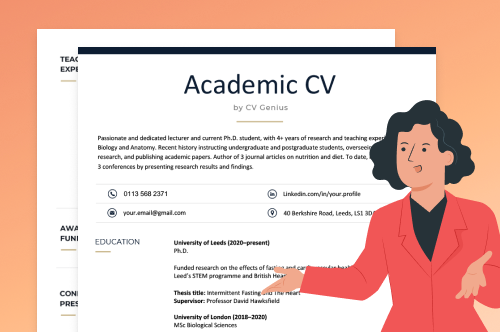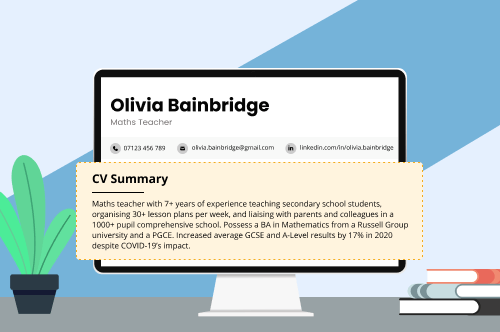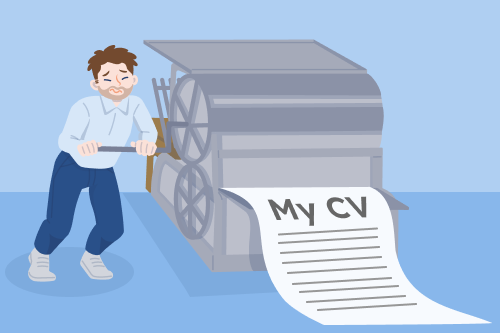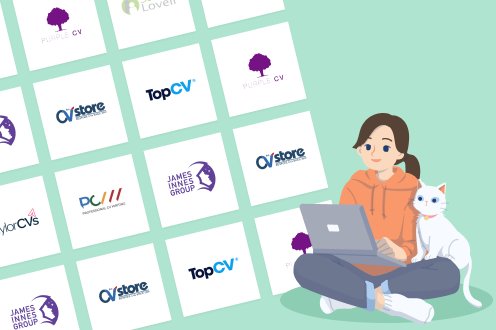Academic CVs differ considerably from the standard format CVs you use to apply for any other type of job. To write a CV for an academic position, you’ll need to highlight relevant areas of your expertise, such as your research employment and publication history.
To make a CV that lands your ideal post in academia, study our academic CV example, template, and detailed writing guide.
Academic CV Template
Copy and paste this academic CV template into your word processor, and replace the information with your own to quickly format your experience for academic recruiters:
Prefer to use LaTex? Download a professional LaTex CV template and personalise it with your information to make a job application that impresses the employer.
Academic CV Example
Here’s an example of the first page of an academic CV:
How to structure an academic CV — section-by-section guide
The list of sections you can include on an academic CV is long — and you can create sections not listed below to highlight your unique accomplishments, if necessary.
You can omit other sections if they aren’t relevant to the post (e.g., don’t include a professional memberships section if your recent memberships aren’t relevant to the post). But you should always include contact information and education sections so employers can see you’re qualified and easily reach you for a job interview.
Still, you should consider all of the following areas of your experience when writing your academic CV, as they might be essential to your specific application. Click on each section to learn how to write it and view examples, or keep scrolling to start from the top:
- Contact details
- Personal statement
- Education
- Publications
- Teaching experience
- Awards and funding
- Research employment
- Conferences and presentations
- Professional memberships
- Technical skills
- Additional qualifications
- References
1. Contact details
First, add your contact details to your academic CV. Ensure that you include the following information about yourself:
- full name
- professional title (e.g., professor, reader, lecturer)
- phone number
- social media profile (e.g., LinkedIn)
Use a professional-sounding email address: your.name@gmail.com is appropriate, crazybaby49@gmail.com isn’t — and remember many universities deactivate university emails after graduation, so opt for a permanent one.
2. Personal statement
Your personal statement (also called a career summary) should emphasise your suitability for the role by outlining:
- your disciplines
- years of experience
- any outstanding achievements or publications
Personal statements can be longer on academic CVs than personal statements on standard industry CVs, but you should still strive to be concise. Limit your personal statement to five to seven sentences, and be selective about what you include. Any information that isn’t essential to the post should be moved to an appropriate section below.
Here’s an example of a personal statement for a teaching position:

3. Education
When writing an academic CV, order your qualifications starting with your most recent degree and working backwards. You should include the following information:
- name of the institution
- dates attended (or expected graduation date if you’re still studying)
- degree type (e.g., Ph.D., MA, BSc)
- your research area
- noteworthy publications
- relevant modules
4. Publications
Your publications section shows employers in academia that you’re a leader in your field, so it should feature early in your academic CV.
List publications such as:
- peer- or non-peer-reviewed articles
- books and book chapters
- forthcoming publications
- reports
- patents
If you have a lengthy list of publications (¾ of a page or more), only include the most role-relevant works so that recruiting managers see the rest of your information as well. You can create an appendix at the end of your CV for any additional publications you want to include.
Cite your publications as you would in an academic paper, using the preferred citation style of the institution you’re applying to.
Here’s an example of a publications section on an academic CV, using APA citation style:
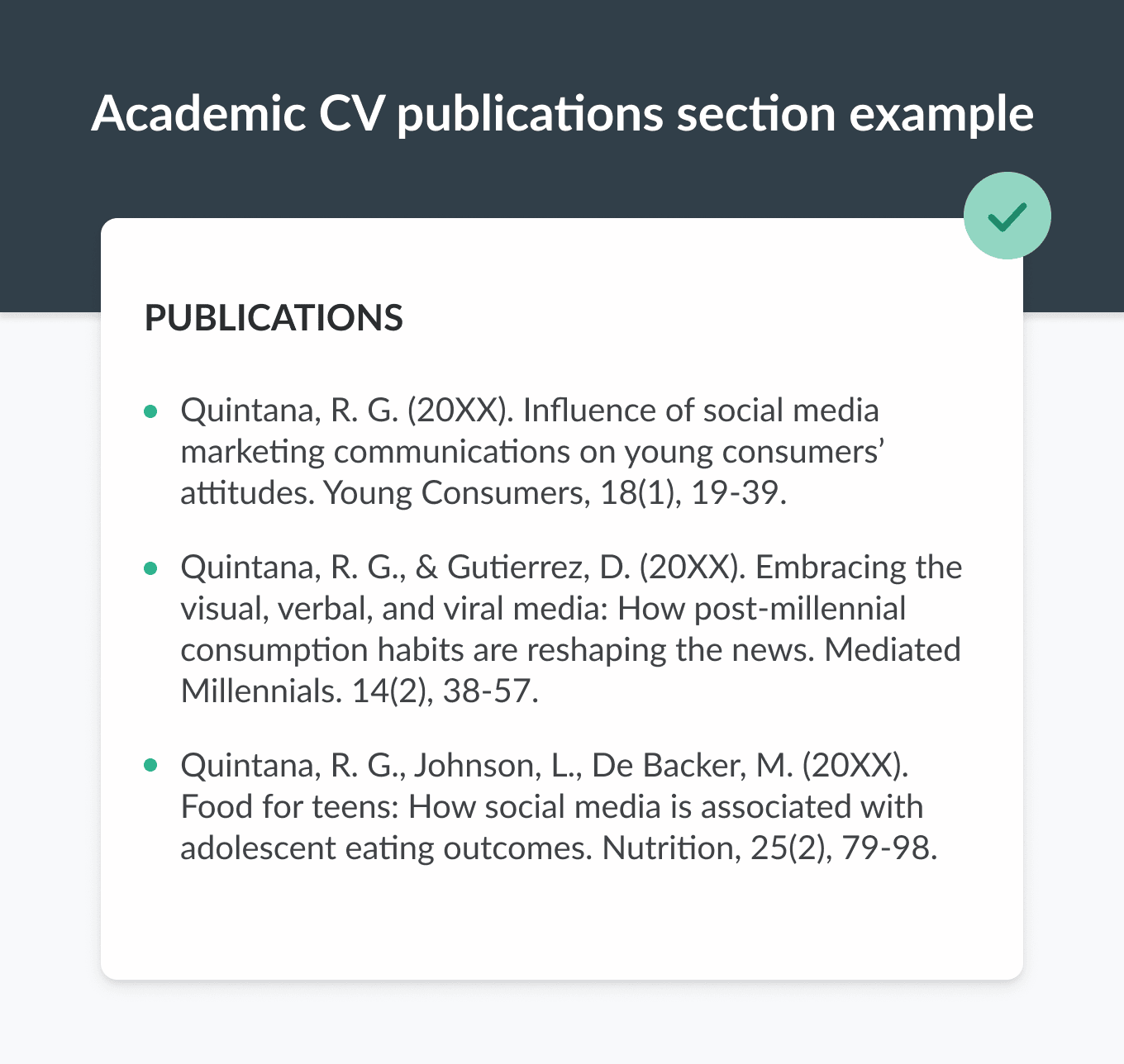
5. Teaching experience
Your teaching experience section can include any relevant experience, such as assistant teaching, lecturing, tutoring, conducting seminars, lab demonstrations, exam marking, and group work.
Group your teaching experience by type if this section gets too long.
Ensure each entry includes your:
- job title
- institution name
- dates of employment
- subjects or modules taught
Additionally, you may include the class size and other relevant information, such as your individual responsibilities. But don’t include course codes — they aren’t the same across institutions and may confuse the reader.
Here’s an example of a properly formatted teaching experience entry:
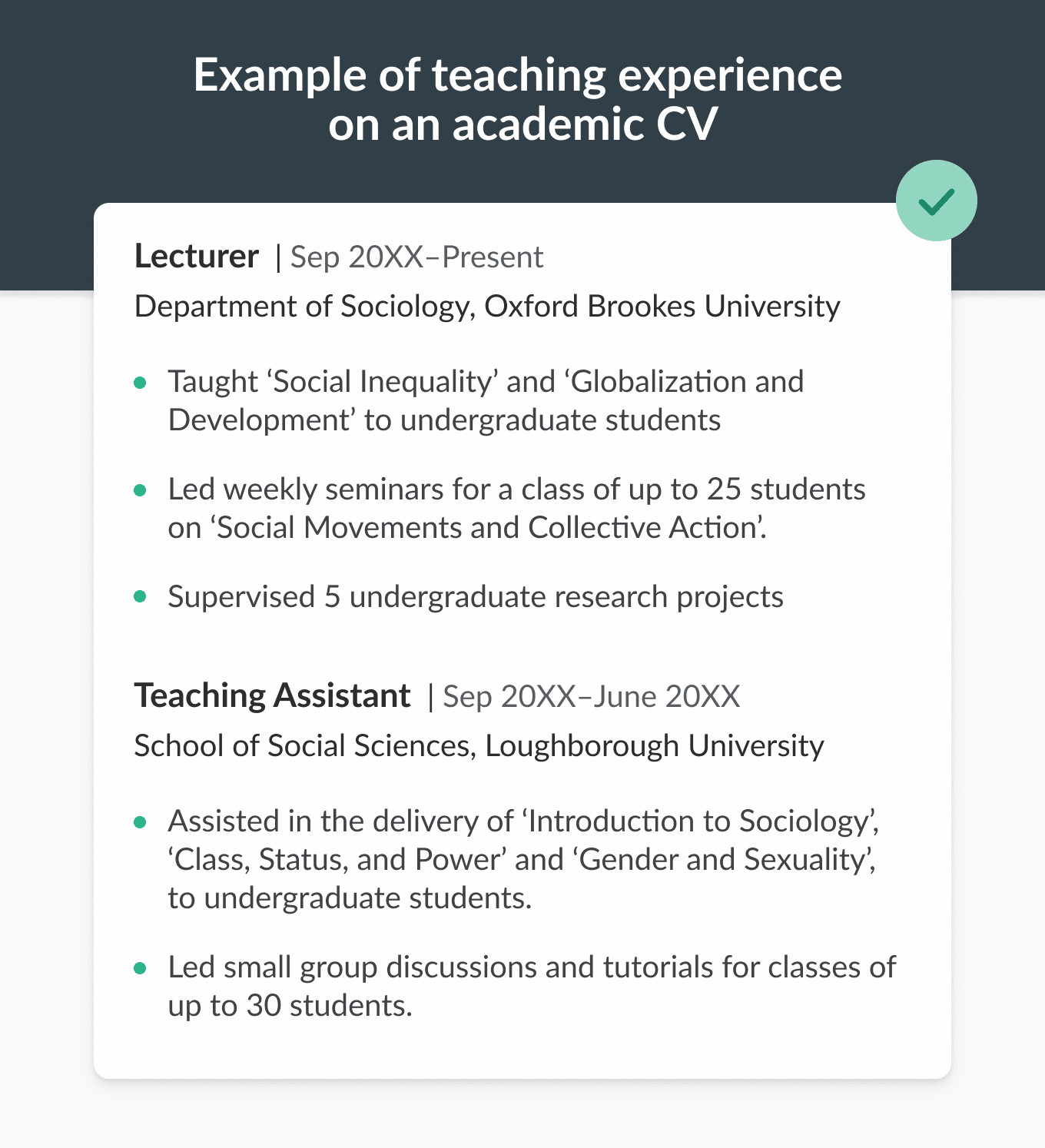
6. Awards and funding
Awards and funding add to your academic prestige, making you more desirable to employers. You can include scholarships, bursaries, grants, fellowships, or any other source of academic funding in this section.
Each award and funding entry should include the:
- award name and amount in pounds (if applicable)
- name of the issuing institution, government body, or organisation name
- date awarded
Give a brief description of awards if you don’t think the reader will recognise them.
7. Research employment
Similar to your teaching experience, include dates, the institution name, your supervisor’s name, and a summary of the research.
Additionally, bullet the following under each entry in your research employment section:
- your research area and objective
- methods used
- noteworthy findings
- any relevant technical skills you used
8. Conferences and presentations
Listing conferences you’ve attended and presentations you’ve given shows employers you’re constantly exposing yourself to new ideas and building connections in your industry.
If you’ve attended several conferences, be selective about which ones you include. You can always include a complete list of the conferences you’ve attended in the appendix.
For each conference, mention any of the following that apply:
- the conference name
- the date it was held
- your research title
- any contributors or author(s)
- whether the research presentation was a paper, poster, or exhibition
9. Professional memberships
Being affiliated with a professional society or club adds prestige to your academic profile, which is why you should include any noteworthy memberships on your academic CV.
Limit your professional membership section to affiliations that are prestigious, well-known, and relevant to your field of research. For example, being a member of the Royal Society of Biology would be relevant and noteworthy for a biologist.
Here’s an example of professional memberships listed on a biology lecturer’s academic CV:
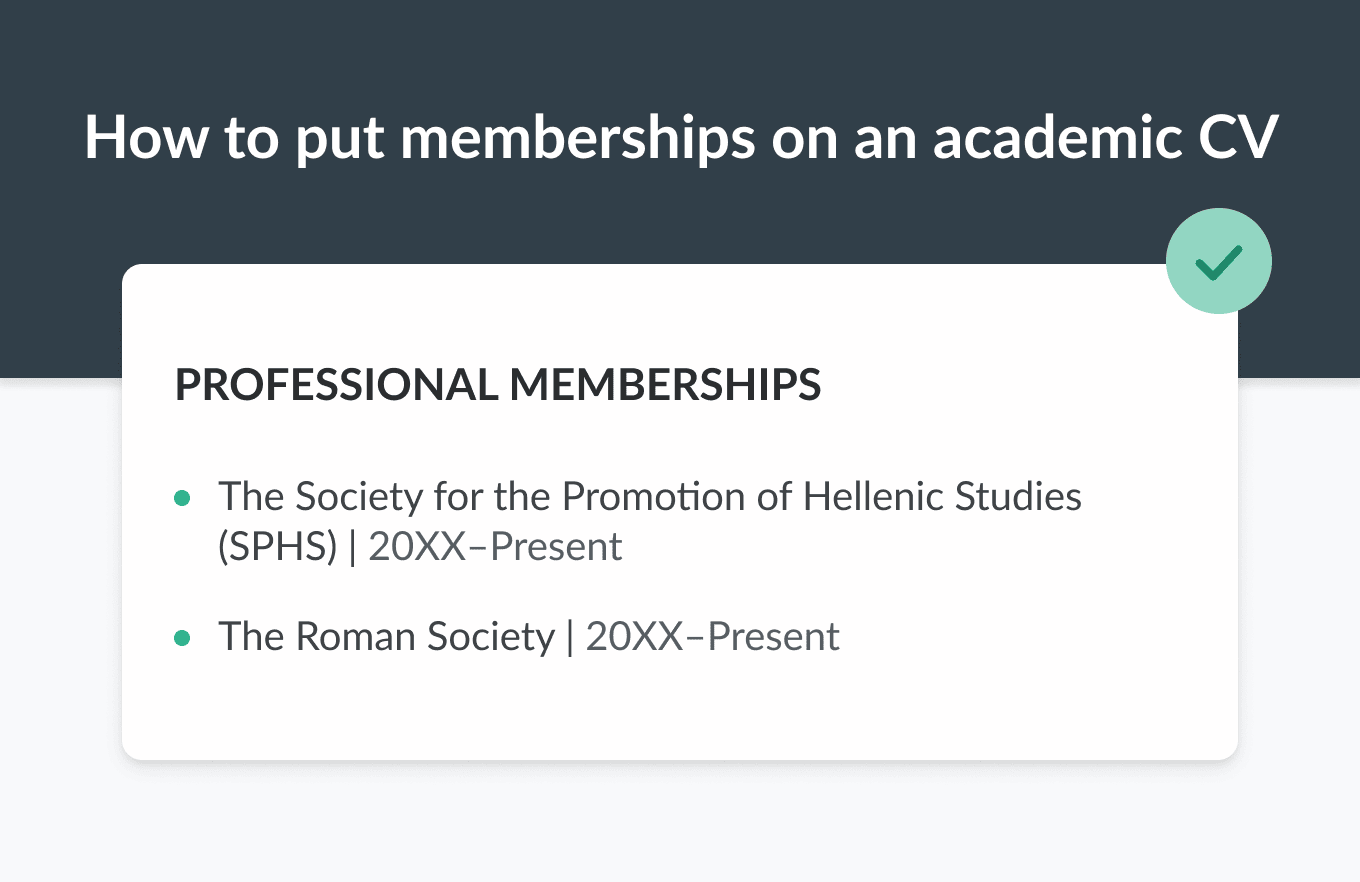
10. Technical skills
Your technical skills are the abilities that you need to do any specific job — e.g., qualitative data analysis for a sociology researcher.
As academic work is highly specialised, the person reading your CV needs to see that you have the right technical skills for the role — especially if the position you’re applying for involves hands-on research.
Make your research and technical skills section easy to read by categorising skills and organising them by relevance to the position you’re applying for.
A well-organised technical skills section on an academic CV might look like this:
11. Additional qualifications
Use this optional section to add any notable qualifications that you didn’t place in the previous sections. As with previous academic CV sections, you should include the:
- qualification name
- date you obtained it
- awarding institution
12. References
Though CV references for non-academic jobs are provided on a separate document, you should include a references section on your academic CV.
Include three referees who can vouch for your character and expertise.
Ideally, your referees should work in the same academic field as you. It’s common in academic CVs to feature your Ph.D. supervisor as well as at least one other academic.
For each reference, you should include the referee’s:
- name
- professional title
- relationship to you (e.g., supervisor, colleague)
- contact information, such as their email address and phone number
Here’s an example of a properly formatted reference section on an academic CV:

Always ask your referees before adding them to your CV. Failing to check that a person is willing to be listed as a reference could make you appear dishonest and undermine your entire application.
Frequently asked questions about academic CVs
Here are answers to four of the most common CV questions asked about academic CVs:
1. What is the difference between an academic CV and regular CV?
The approach to writing an academic CV differs from how to write a CV for a job outside of academia. Unlike standard CVs, which are normally about two pages, academic CVs are often much longer (3 pages or more) to fit the specific information requirements of academic employers — like the publications and conferences you’ve attended.
If your academic CV is excessively long, consider creating an appendix for any accomplishments that are relevant but not essential to the position.
2. What order should an academic CV be in?
You have a lot of flexibility in how you organise your academic CV. Your contact information, personal statement, and education should be listed first, but you can order the other sections based on their relevance to the specific role.
For example, if you’re applying for a research-heavy post, you may want to place your research and publication sections after your education section, rather than starting with your teaching experience.
3. Do I need to put work experience on an academic CV?
You should include work experience outside of academia if it helps you explain gaps in your academic career and is relevant to the position you’re applying for. Format non-academic work experience as you would in a standard CV.
Don’t go into detail about your responsibilities unless they help qualify you for the position you’re applying for.
4. How do I convert my academic CV to an industry CV?
You convert your academic CV to an industry CV by condensing the most job-relevant information from your career in academia into these CV sections:
- CV header with your name and contact details
- personal statement
- work experience
- education
- skills
- hobbies and interests
If you have little or no work experience relevant to the industry job you’re targeting, consider turning your academic CV into a skills-based CV. This type of CV features a large skills section that connects your transferable abilities to the role.
Questions about academic CVs from Reddit
Here are answers to two common Reddit questions about academic CVs:
1. Why is the formatting of an academic CV such a nightmare?
Our response to this understandably frustrated Redditor is this:
If formatting your academic CV feels like a nightmare, you’re using the wrong resources. You can quickly find a simple CV template online that’s easy to edit — or use a CV maker that professionally formats your existing CV for you.
2. What CV template do you use for an academic CV?
FlyingQuokka asked this question on Reddit. Here’s what our experts have to say:
As you’re an academic, your work should be the highlight of your job application, not a fancy CV design. So use a CV template that’s professional and easy to read, with an appropriate CV font (e.g., Times New Roman or Arial).
Avoid overly colourful templates, and never put your photo on your CV. British employers immediately bin job applications with photos because they don’t want to be accused of implementing biased hiring practices.
Applying to a university in Europe? It’s standard to add a photo to academic CVs on the continent, so consider using a photo CV template.
